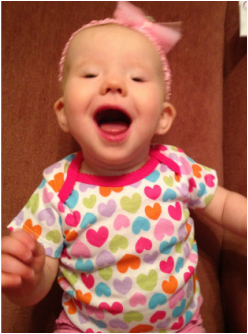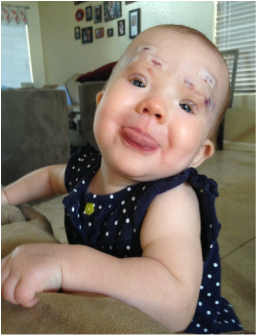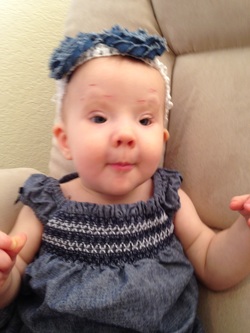Medical ProceduresBelow are brief descriptions of various procedures. Talk to your medical professional for more details. Please note that procedures and results vary.
Genetic Testing After genetic counseling with a geneticist, a quick blood draw is required to send a sample to a lab. It may take up to a few months to get results that may be inconclusive as some mutations are found with individuals with type 1 and type 2. Frontalis Sling This procedure is the most common correction for ptosis which is also found in individuals without BPES. The eyelid is connected to the frontalis muscle which is used to raise the eyebrows to correct the lack of levator muscle. There will be three incisions above the eyebrow. The material used to connect the muscle varies including facia lata (frequently tissue from one's thigh or donor tissue) or a synthetic material (silicone or supramid). Often performed at under 1 year with synthetic material, then later with facia lata. This can fall and need to be replaced but is frequently very successful for BPES correction. Levator Resection This is another approach to ptosis correction where the levator muscle in the eye is shortened to improve the ability to open the eyelids. "Widening" Various procedures are done to widen the eyelids. Canthoplasty is done to reshape the inner (or outer) eyelid with an incision and reconnection of tissue to create less space between the eyes. Transnasal wiring can also improve the space between the eyes. Z-Plasty is done to improve the epicanthus (upward) fold. |
Medical specialistsOphthalmologist
A physician who specializes in medical and surgical care of the eyes and visual system. Occuloplastic Surgeon An ophthalmologist who specializes in plastic and reconstructive surgery. You may find one who specializes in pediatrics as well. Craniofacial Surgeon A surgeon who specializes in plastic surgery dealing with deformities of the head, skull, face, nick, and jaws. Geneticist A physician with special training in medical genetics. Genetic Counselor A healthcare professional with specialized training in medical genetics and counseling. Endocrinologist A physician who specializes in diagnosis and treatment of diseases related to hormones. Medical Social Worker A social worker who works in a hospital, clinic or health agency. |
Advice for Surgeries
|
Before
|
After
|
Helpful items
Here are some items that may be helpful based on recommendations from people with BPES or their caretakers.
- A good sunhat: iplay
- Car window shade: The ShadeSox
- Eye patches: Fresnel Prism
- Please contact us with other suggestions!



